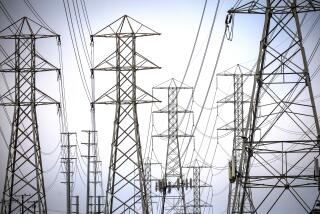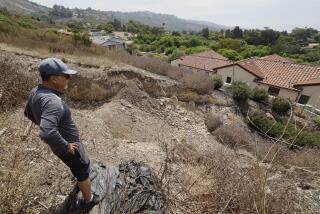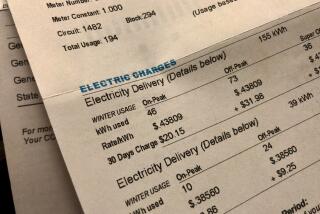Power, Gas Rates to Stay Stable, SDG&E; Chief Says
SAN DIEGO — San Diego Gas & Electric rates will remain stable during 1986, and the company will move forward with its planned diversification into non-utility businesses, Chairman and President Thomas Page predicts.
During his fourth annual State of the Company address, Page said that SDG&E;’s residential gas and electric rates, “which are the lowest in five years,” will probably remain stable through 1989.
The utility supplies electricity to southern portions of Orange County. Page predicted that the “average” residential monthly bill (400 kilowatt hours of electricity and 40 therms of gas) will continue to be $60 to $65.
“I would really like to have come here . . . and tell you that we’re no longer in the top 10 rates in the country,” said Page, who acknowledged that San Diego residents still suffer from the dubious distinction of paying utility rates that are among the nation’s highest. “We have an objective of getting out of the top 10 . . . and our rates are going down.”
Residential gas and electric rate-payers are benefiting from a continuing slide in the price of crude oil and natural gas, said Page, who added that SDG&E; has also negotiated lower interest rates on its borrowings and signed new contracts for lower-cost electricity produced by utilities as far afield as Canada and Mexico.
Page, who delivered his report Thursday, said he is optimistic that the utility will receive state Public Utility Commission approval to create a holding company that would allow SDG&E; to diversify into non-utility businesses. SDG&E; shareholders, the Securities and Exchange Commission and the Internal Revenue Service have approved the holding company proposal.
“Next month, I think we’ll have more news on that,” said Page, who maintained that SDG&E; will not limit its planned diversification if the PUC withholds approval or grants approval with conditions which the utility considers to be inappropriate.
Page also suggested that SDG&E; will convince the PUC that shareholders should not absorb $120 million in construction costs associated with the utility’s 20% ownership of Units 2 and 3 at the San Onofre Nuclear Generating Station.
PUC staff members and the San Diego-based Utility Consumers Action have contended that shareholders of SDG&E; and Southern California Edison, the majority owner of the San Onofre units, should pay for construction costs that were inflated by allegedly bad management decisions.
Page pledged that SDG&E; will use cheaper rates to capture the commercial and industrial customers who have avoided SDG&E;’s higher-cost electricity by building generating plants that produce electricity more cheaply.
“Frankly, I don’t blame them,” Page said. He added that SDG&E; would chop its off-peak rates by 40% in order to recapture those heavy electric and gas users.
As those high-volume electric and gas users built their own energy plants, SDG&E;’s “market share in San Diego eroded,” Page said. “That has to be reversed.
More to Read
Inside the business of entertainment
The Wide Shot brings you news, analysis and insights on everything from streaming wars to production — and what it all means for the future.
You may occasionally receive promotional content from the Los Angeles Times.










